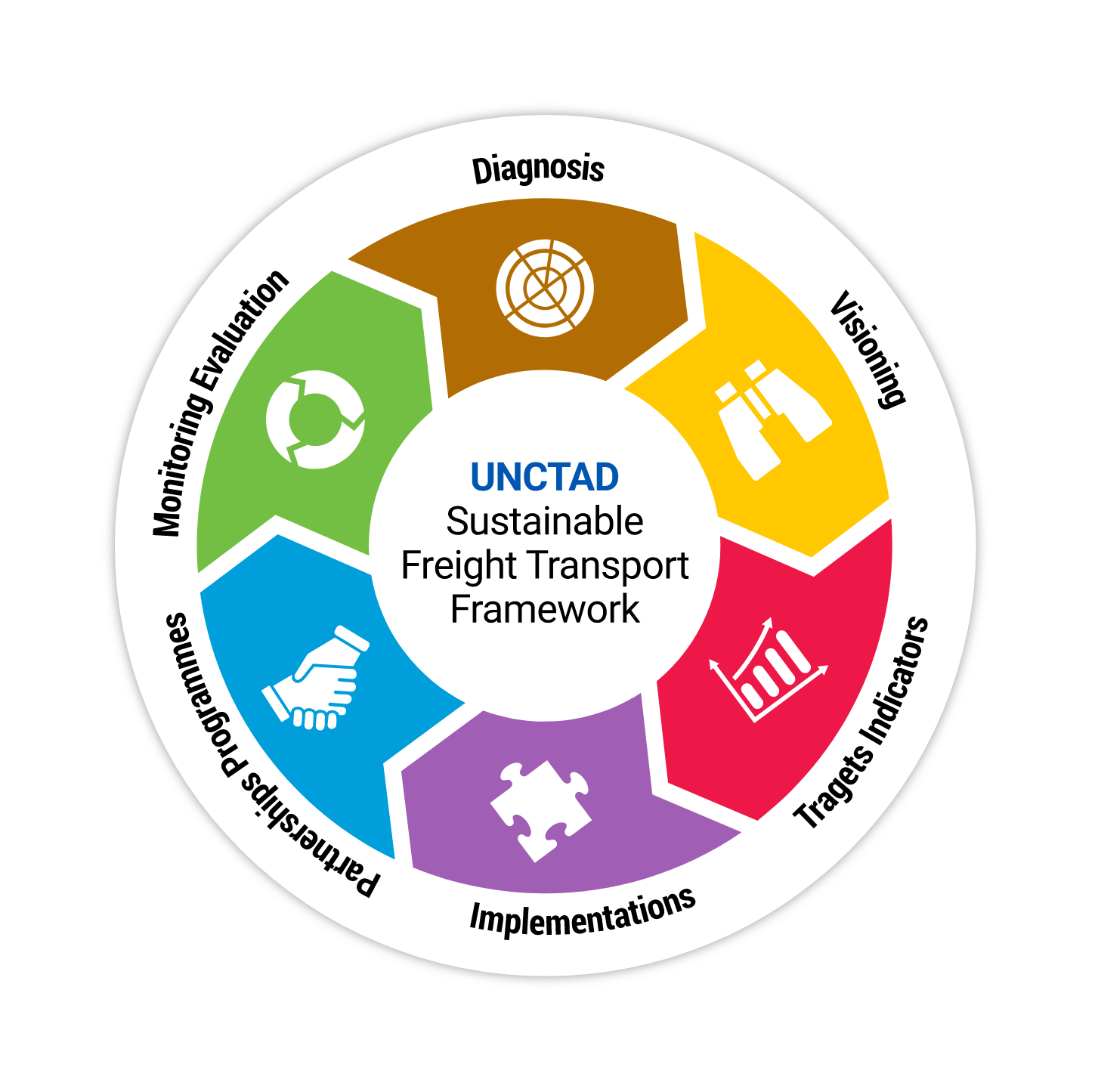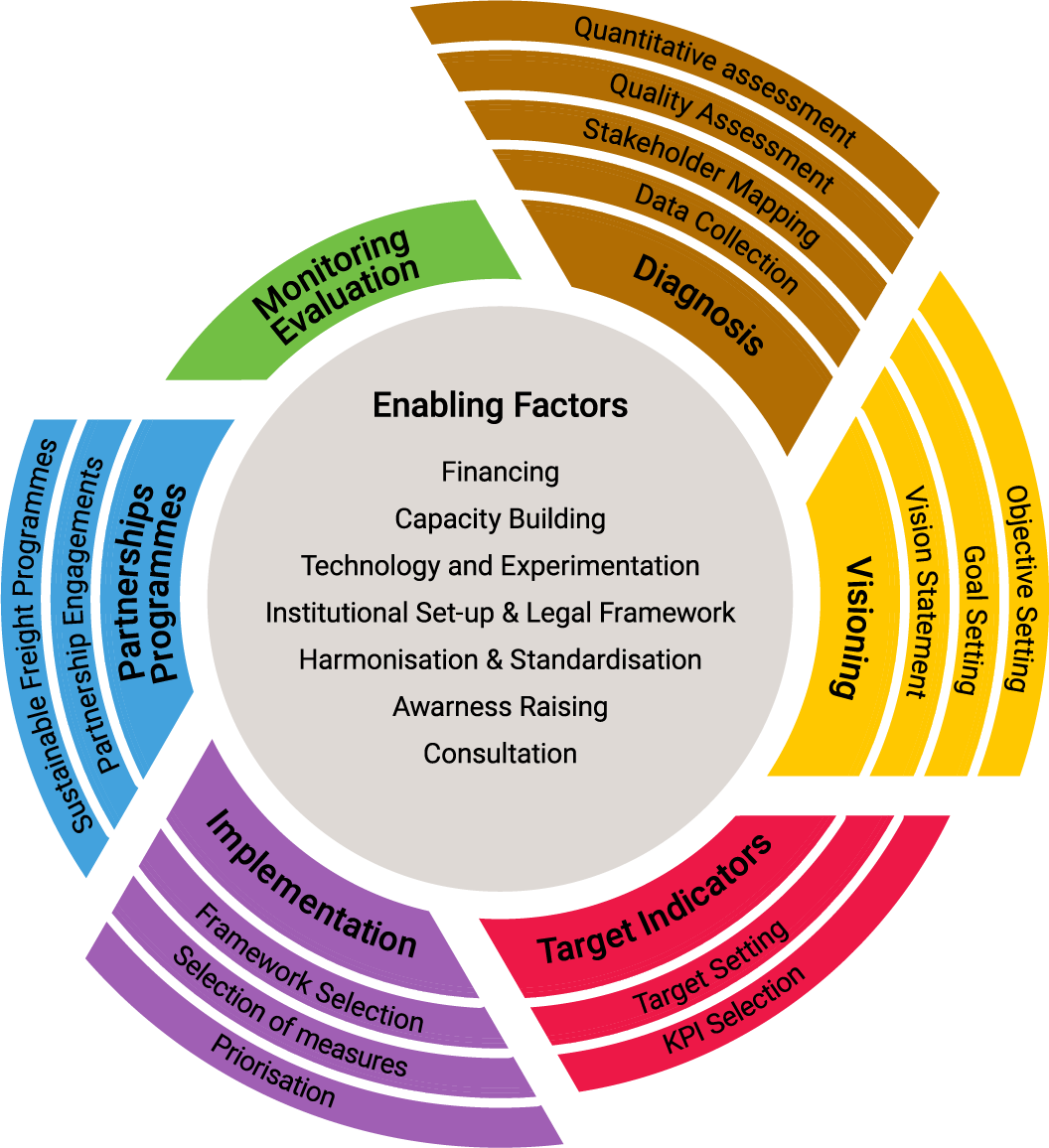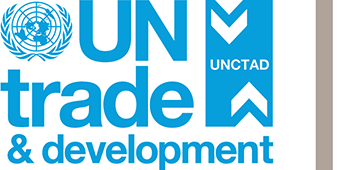



The UNCTAD Sustainable Freight Transport Framework
At a glance
Articulated around six Steps, one set of cross-cutting Enabling Factors, and twenty-seven detailed substeps, the UNCTAD Sustainable Freight Transport Framework provides a modular step-by-step process that details how to plan, design, develop and implement tailored sustainable freight transport strategies. Applicable to different stakeholders, within and across modes of transport and in various geographical areas, the methodology is flexible and can be modulated to allow for some steps to be carried out in parallel. Substeps and related activities can also be adapted to reflect stakeholders’ varying needs, resources and priorities. In addition, the SFT Framework allows for a circular process in which a monitoring and evaluation exercise is undertaken at the end of the cycle after having implemented the sustainable freight transport strategy. The figures below provide a graphical illustration.
The aim is to help determine how the sector is performing in terms of the economic, social, and environmental sustainability objectives. Once this performance measurement is established, adequate adjustment measures to improve the strategy can be envisaged. Incorporating sustainable freight transport considerations into existing public and private sector planning processes may require additional work and resources. Depending on the context, however, some steps are likely to be more critical than others, and may require more attention and resources. Overall efforts involved during each step can vary depending on local priorities and resources.
An effective sustainable freight transport strategy does not stop at the question “what do we want to do?” i.e. outlining the overall vision. The strategy needs to support the vision with an action plan to deliver the desired outcomes through the appropriate instruments, including policy-related instruments. The main question is therefore, how do we do it and how do we get the resources (institutional and financial) to deliver the strategy? Other related considerations include the following:
- 1 Which issues in the freight transport sector should be considered?
- 2 Who are the stakeholders?
- 3 What determines the performance of the freight transport sector?
- 4 What are the broad and bold aspirations associated with the freight transport sector?
- 5 What is the ultimate objective that the sustainable freight transport strategy aims to achieve?
- 6 What are the best options for developing and implementing a sustainable freight transport strategy?
- 7 How to balance the varied perspectives and move the planning process forward?
- 8 How can the strategy be made into a reality?
- 9 How can we learn and adapt when things are not happening as planned?

Where to start?
The steps of the Framework can be carried out in sequence or partially in parallel, depending on the local requirements, timelines and resources
You can start by having a look at our tools:
You can begin with the first step of the methodology
Who are we?
UNCTAD is part of the UN Secretariat. We report to the UN General Assembly and the Economic and Social Council but have our own membership, leadership, and budget. We are also part of the United Nations Development Group.
We support developing countries to access the benefits of a globalized economy more fairly and effectively. And we help equip them to deal with the potential drawbacks of greater economic integration. To do this, we provide analysis, facilitate consensus-building, and offer technical assistance.
More information about UNCTAD's work in transport is available at the UNCTAD site.
Contact the UNCTAD Transport Section
